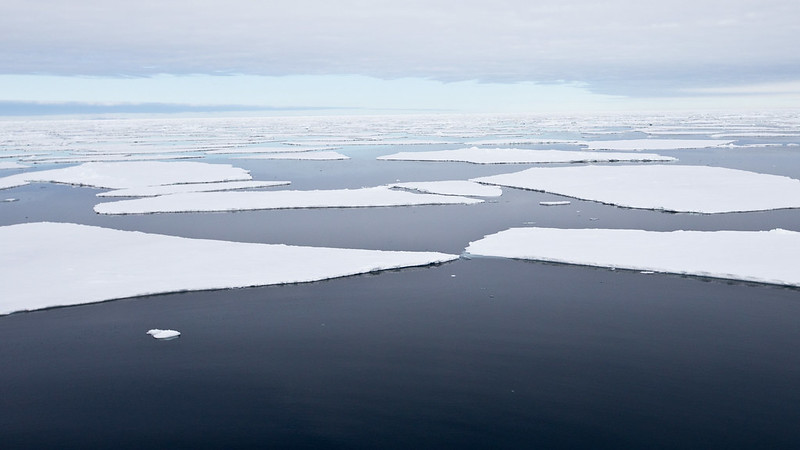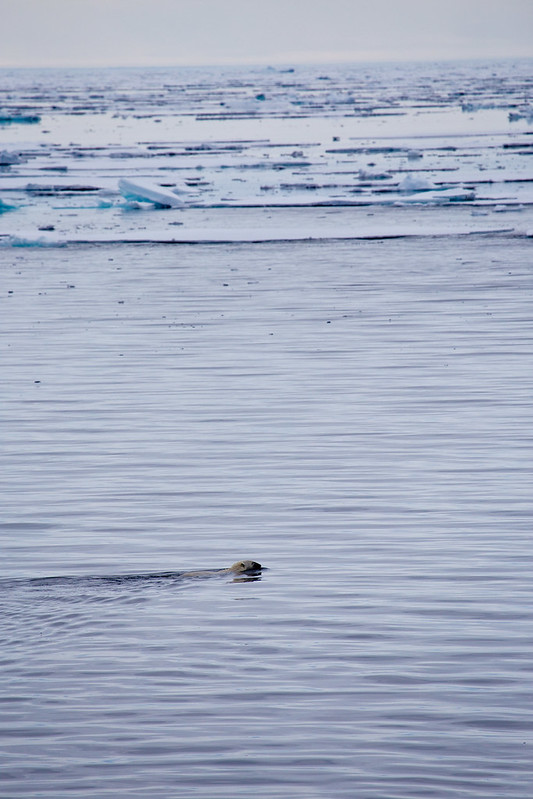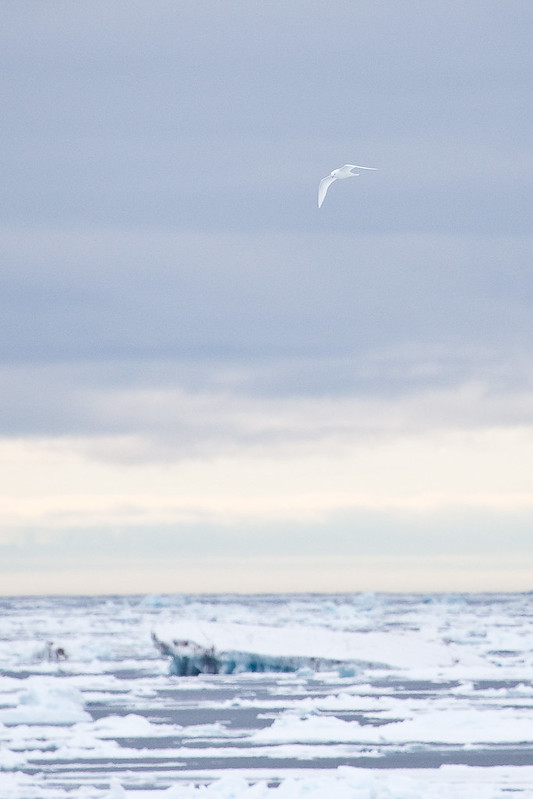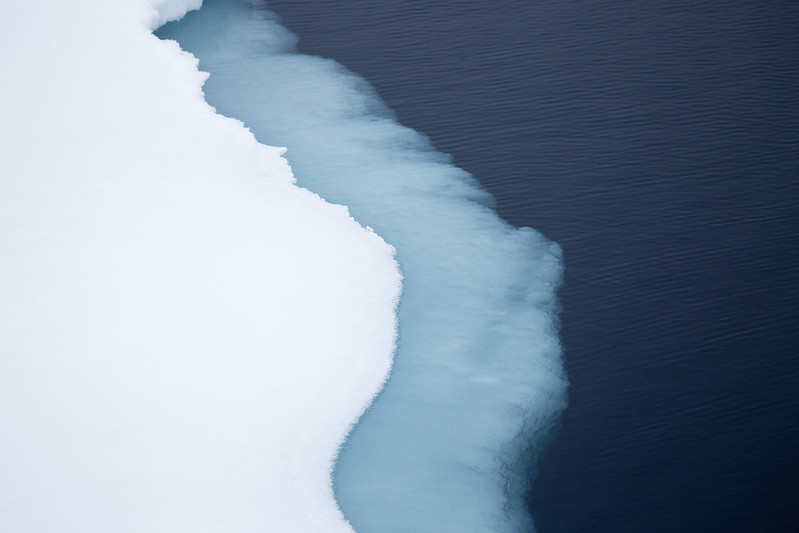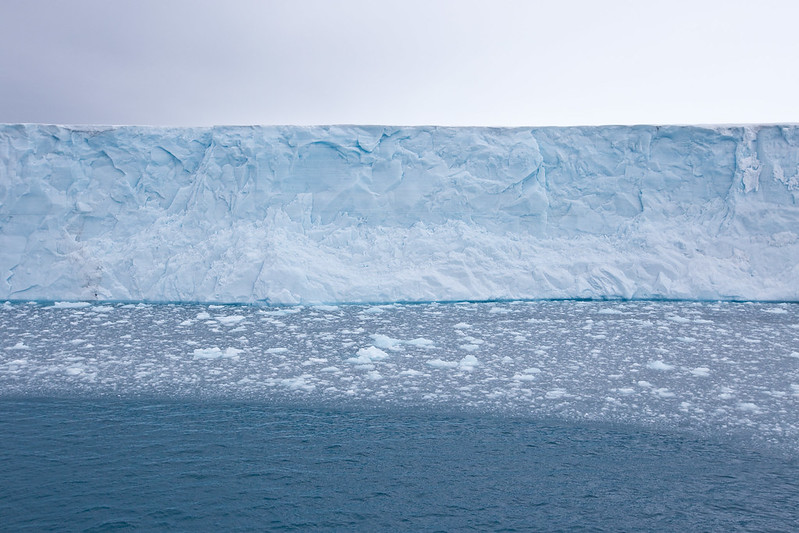Wednesday 6/25
Into the ice!
An early wake-up once again: this time 3:50am and I couldn’t get back to sleep. But this turned out fine, because we were called at 4:30 to see our first polar bear in the pack ice!
He was initially swimming toward the ship, but even though I was one of the first passengers to throw on a coat and head out on deck, he was swimming away from us when I arrived. The golden early morning light was breathtaking, and he sat up on some low-lying ice and posed a bit before moving on. What a magnificent creature. A couple of hours later we saw another bear in the water; we hung out with this one for quite a while and watched him swim between ice sheets, occasionally stopping to look around for seals.
While moving through the ice floes later, we also came across ivory gulls, bearded seals, and another walrus. Ivory gulls are known scavengers who will often eat the remains of a polar bear kill, so seeing them around is a good sign that bears are near.
Pack ice conditions today were perfect: flat water that was glassy and gorgeous, and a partly sunny sky. I couldn’t get enough of the colors, shapes, and sounds of our ice journey and spent every possible moment out on deck. Whenever we hit an ice sheet, the whole ship would shudder and shake and the sound could be loud as thunder. At a couple of points I leaned over the bow to watch and record what happens when the ship hits ice – incredible! The National Geographic Explorer is an Ice Class ship that is built to withstand tough sea ice conditions. When heading through the ice, the ship’s crew weights down the rear of the ship by filling water tanks, allowing the ship to ride high in the front to help it break through the ice sheets.
In the afternoon, we heard from naturalist Magnus Forsberg about polar bears. In his talk I learned about delayed implantation, in which the fertilized egg does not implant unless the mother’s body is healthy and can adequately support the pregnancy. I also learned that climate change has caused polar bear and goose habitats to overlap for the first time, and that some bears have been eating geese and their eggs to supplement their diets as sea ice declines. Here is an interesting article about polar bear survival on land.
In addition, in today’s recap we heard from other naturalists about Red Phalaropes and how they use water’s surface tension to help them eat – cool! We learned more about walrus and seals, and saw underwater footage from our journey. So much color under the ocean here – it reminded me the scenery underwater where I learned to SCUBA dive near Monterey, CA (with kelp and nudibranchs, sea stars and anemones).
After dinner tonight we cruised along the southern face of the Austfonna Polar Ice Cap. This single face was 105 miles long and 100 feet high in some places. Because this section of the ice cap was fairly stable, we were able to get quite close to it (about 20 feet away) and see glacial waterfalls and the amazing turquoise blue of the ice and the water below it.
We reached 79°N today!
Wednesday brainstorming
- Photo of the week project. Show a different photo from my travels and ask a question, for example: why is this ice blue? which of these birds is male? what type of glacier is this?
- how do polarizing filters for cameras work? possibly relate to stereochemistry
- marine animal protection
- formation of sea ice; how does water freeze? how is salt water different?
- Pollution in the Arctic:
The Gulf Stream goes past Svalbard’s west coast – carrying warmer water and pollutants
Discuss food chain and concentrations of pollutants in different animals (bears, whales)
Polar/nonpolar body tissues and pollutants (fat/blubber)
- Red phalarope takes advantage of water’s surface tension while eating.
http://www.sciencedaily.com/releases/2008/05/080515145426.htm

